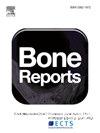一个简单易用的机器学习模型来检测台湾南部健康检查人群中的骨质疏松症。
IF 2.6
Q3 ENDOCRINOLOGY & METABOLISM
引用次数: 0
摘要
背景:骨质疏松症是台湾等老龄化人口日益关注的公共卫生问题,双能x线吸收仪(DXA)的有限使用经常导致诊断不足甚至延误治疗。因此,我们利用机器学习(ML),旨在开发一种简单易用的模型,有效识别骨质疏松症高风险个体。方法:本回顾性分析纳入5510名年龄≥50岁的男性和4720名绝经后妇女,并在高雄退伍军人总医院接受DXA治疗,另一队列为610名男性和523名女性进行验证。我们使用决策树、随机森林、支持向量机、k近邻、极端梯度增强和人工神经网络(ann)为男性和女性开发了单独的模型来预测骨质疏松症。此外,我们将每个模型与传统的骨质疏松自我评估工具(OSTA)模型进行了比较。结果:我们确定了年龄、身高、体重和BMI作为预测模型的变量,并使用受试者工作特征曲线下面积(AUC)评估模型的性能。ANN模型在男性和女性上都明显优于OSTA模型和所有其他ML模型(AUC: 0.67;女性0.77)。人工神经网络模型的验证数据显示,男性和女性的auc相似。结论:本研究建立了ML模型,以帮助识别台湾南部年龄≥50岁的绝经后女性和男性骨质疏松症的高危个体。我们的机器学习模型,尤其是人工神经网络模型,超越了OSTA模型,并在不同的人群中始终表现良好。本文章由计算机程序翻译,如有差异,请以英文原文为准。


A simple and user-friendly machine learning model to detect osteoporosis in health examination populations in Southern Taiwan
Background
Osteoporosis is a growing public health concern in aging populations such as Taiwan, where limited utilization of dual-energy X-ray absorptiometry (DXA) often leads to underdiagnosis and even delayed treatment. Therefore, we leveraged machine learning (ML) and aimed to develop a simple and easily accessible model that effectively identifies individuals at high risk of osteoporosis.
Methods
This retrospective analysis enrolled 5510 men aged ≥50 years and 4720 postmenopausal women who underwent DXA at the Kaohsiung Veterans General Hospital, with another cohort of 610 men and 523 women for validation. We developed separate models for men and women using decision trees, random forests, support vector machines, k-nearest neighbors, extreme gradient boosting, and artificial neural networks (ANNs) to predict osteoporosis. Furthermore, we compared each model with the traditional Osteoporosis Self-Assessment Tool for Asians (OSTA) model.
Results
We identified age, height, weight, and BMI as variables for our prediction model and evaluated the model's performance using the area under the receiver operating characteristic curve (AUC). The ANN model significantly outperformed the OSTA model and all the other ML models for both men and women (AUC: 0.67 for men; 0.77 for women). The validation data for the ANN model showed similar AUCs for both men and women.
Conclusion
This study developed ML models to help identify individuals at high risk of osteoporosis in postmenopausal women and men aged ≥50 years in southern Taiwan. Our ML models, especially the ANN model, surpassed the OSTA model and consistently performed well across different populations.
求助全文
通过发布文献求助,成功后即可免费获取论文全文。
去求助
来源期刊

Bone Reports
Medicine-Orthopedics and Sports Medicine
CiteScore
4.30
自引率
4.00%
发文量
444
审稿时长
57 days
期刊介绍:
Bone Reports is an interdisciplinary forum for the rapid publication of Original Research Articles and Case Reports across basic, translational and clinical aspects of bone and mineral metabolism. The journal publishes papers that are scientifically sound, with the peer review process focused principally on verifying sound methodologies, and correct data analysis and interpretation. We welcome studies either replicating or failing to replicate a previous study, and null findings. We fulfil a critical and current need to enhance research by publishing reproducibility studies and null findings.
 求助内容:
求助内容: 应助结果提醒方式:
应助结果提醒方式:


